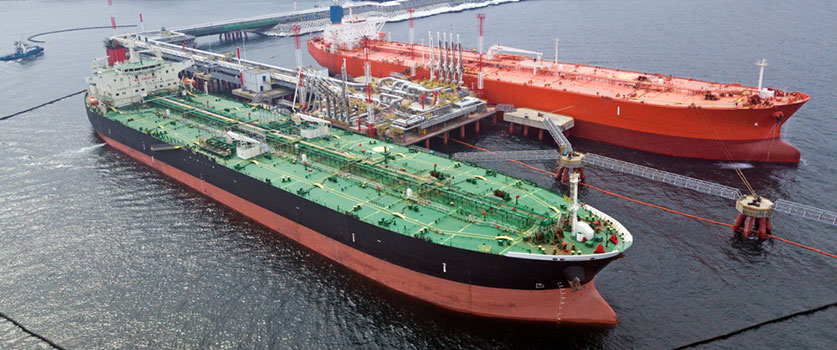Nitrogen Blanketing and Padding for Tanks, Transformers & More
January 28, 2020

Elemental nitrogen is one of nature’s most abundant chemical substances accounting for a significant portion of air. Gaseous nitrogen has found countless applications in industrial manufacturing processes including beverage preparation, fertilizer manufacturing, pharmaceutics, oil and gas recovery, and electronics production.
Further, numerous industrial production methods use volatile chemicals that pose safety hazards if improperly handled. Due to its inert and stable nature, gaseous nitrogen can also be used to coat the inner surfaces of chemical storage and transport components that hold these easily combustible substances.
This highly effective technique is known as nitrogen blanketing and significantly improves the safety profile of any industrial setup. This article will explain the basic concept of nitrogen blanketing, various industrial settings where it can be employed, and how it should be employed.
What Is Nitrogen Blanketing?
Nitrogen tank blanketing, also referred to as nitrogen padding, is a process where gaseous nitrogen is introduced into an empty or partially filled storage tank or container. The nitrogen will prevent the onset of chemical reactions that may cause explosions, oxidation, or other unwanted effects.
In most blanketing operations, the nitrogen production is possible via:
- Membrane Gas Separation
- Pressure Swing Adsorption
Membrane Gas Separation
The principles of gas separation using a membrane is based on the differing rate of permeation of air components through hollow fiber membrane.
When using membrane nitrogen generators as the source of nitrogen used in padding tanks, semi-permeable membranes are used to separate inflowing air into its distinct components. The extracted nitrogen gas can then be injected into the chemical storage tanks.
Pressure Swing Adsorption
Pressure swing adsorption utilizes different adsorption rates of various gases when passed through an adsorbent material bed. The adsorbent material will separate a gaseous mixture based on its unique physical and chemical properties via a two-step process of adsorption and desorption.
Pressure swing adsorption nitrogen generators can produce nitrogen with purities up to 99.9995%.
Why Is Nitrogen Padding Necessary?
In industries where volatile and easily combustible chemicals are an integral part of the production process, the issue of safely handling and storing these materials will arise. The planning and implementation of a standard nitrogen blanketing procedure is one way industrial players can minimize the risks of the explosive hazards associated with their chemicals.
In addition to mitigating the risk of unwanted chemical combustion, utilizing nitrogen blanket systems for tanks will help to prevent the accumulation of water vapor, oxygen and other impurities within this storage equipment. In the absence of these undesirable contaminants, chemicals will be shielded from oxidation reactions which might have shortened their useful life.

Common Applications of Nitrogen Blanketing
Nitrogen inert gas systems can be used in industrial applications to achieve chemical stability both during storage and transfer. Nitrogen blanketing is commonly employed in:
- Chemical tankers
- Storage tanks
- Transformers
- Airplanes
Chemical Tankers/Storage Tanks
For chemical blanketing, a nitrogen generator on chemical tankers or near chemical storage tanks can work with regulatory devices that monitor nitrogen concentration and pressure. When unwanted alterations in nitrogen gas blanket pressure are detected, stabilizing valves and vents in the storage tanks can be opened as required to introduce more inert gas into the system or bleed off excess the pressure.
A nitrogen blanket system for tanks can help reduce the risk of explosion when flammable liquids are being stored.
Airplanes
Traditionally, using inert gases such as nitrogen within fuel tanks were reserved for military combat aircraft. With newer aviation safety regulations, blanketing is now routinely done for both civilian and military air transport vehicles. Onboard inert gas generation systems (OBIGGS) help reduce the elements of the fire triangle in fuel systems for safer flying.
Transformers
Power transformers use oil for core cooling as well as insulation which are critical to their proper functioning. As a result, the presence of contaminants within the transformer oil will result in the loss of its insulation properties. Transformer oil can be preserved with nitrogen padding.
Creating a nitrogen blanket in transformers provides a gas-oil seal which effectively removes contact between the oil and contaminants from the external environment (oxygen and other hydrocarbons).
Nitrogen Blanketing Procedure
The main objective in each cycle of blanketing is to maintain a concentration of nitrogen within the padded vessel which prevents the reintroduction of oxygen and other gaseous contaminants. This goal can be achieved by methods including:
- Continuous pressurized nitrogen blanketing using manual controls
- Automatic pressurized vessel purging
- Oxygen concentration measurement and variation
- Dual oxygen concentration and pressure monitoring
Critical to the above-mentioned nitrogen blanketing techniques are two basic processes that maintain a steady pressure of gaseous nitrogen while eliminating oxygen.
Use GENERON Nitrogen Generators for Blanketing & Padding
GENERON has been providing clients with the most effective nitrogen generation solutions for decades. We are a vertically integrated company offering turnkey systems to customers from numerous industries.
Contact our team today for more information about the nitrogen generation services we offer.
